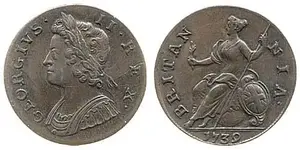Kevo_DFX
Hero Member
- Joined
- Sep 5, 2008
- Messages
- 565
- Reaction score
- 132
- Golden Thread
- 0
- Location
- Greensburg, PA
- Detector(s) used
- DFX
I'm trying to ID these myself, I don't quite trust myself yet.
My guess is George II Young Bust Halfpenny 1729 to 1754. Size is 28mm.

Thanks,
Kevo
My guess is George II Young Bust Halfpenny 1729 to 1754. Size is 28mm.

Thanks,
Kevo




